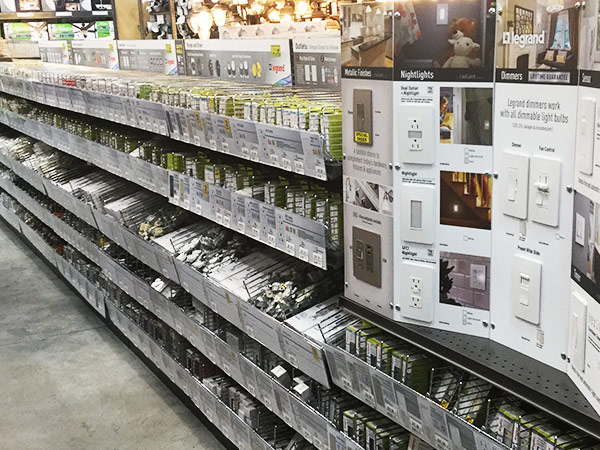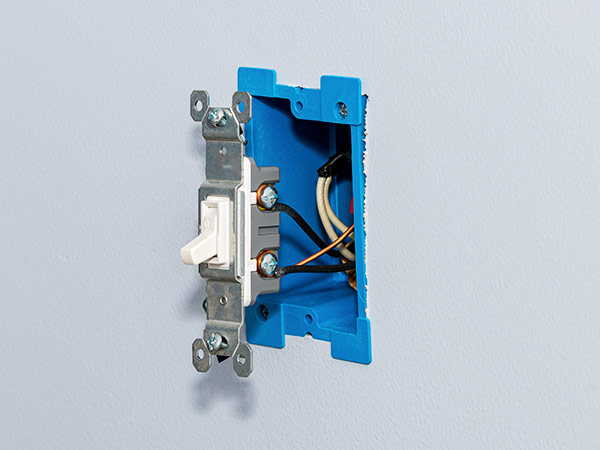

Electrical Boxes: Know Your Power
Need a new outlet for your DIY shop or a new light fixture for your bathroom? You’ll likely step into the world (or aisle) of electrical boxes. Electrical boxes are an integral part of your home’s electrical system and choosing the right one helps ensure that system remains safe. A major remodel like adding on to a room or a smaller job like adding in some new switches, each require different boxes. Let us help you narrow down the options before you head to the electrical aisle.
Why You Need an Electrical Box
Any time you need to add or even upgrade an electric outlet, light switch, or light, you will use an electrical box to house the connections and wires. Short circuits are not something a homeowner wants to deal with as this means the power flow has been interrupted and could cause a fire. These boxes keep connections in your electrical system safe to keep the power flowing and some even provide a grounding option for the power flow. Pick the one you need by answering these simple questions.


Are You Fixing Something Old or Building Something New?
Electrical boxes are first divided into “old work” and “new work” options. New work boxes are for projects that are starting down at the stud level of a home. This is because these types of boxes, based on their design, can only be installed to the studs of a structure. Often, these boxes have tabs that make it easy to install with your nails. Old work boxes are for projects that will be added to pre-existing walls. These boxes are designed to be installed in drywall with a screw clamp.
Is Your Installation on the Interior or Exterior?
A “handy” box that is for indoor switches or outlets and can be easily mounted to the wall, an outdoor box option that is built to withstand the elements, or a switch box that is specifically for switches.
Do You Need to Make Connections with Other Wires?
Junction boxes are great for this. They are boxes designed to house electrical connections, and, like a road with cars, will send the wires out in different directions to their final destination.
Do You Need More Than One Switch?
If you have two switches close together, you won’t necessarily need two boxes. Electrical boxes come in one, two “gang”, or more options. The number of “gangs” is the number of devices you can plug in or the number of switches you will have. Some one-gang boxes are “gangable” where they can be retrofitted to become two- or even three-gang boxes.


Where Are You Putting Your Box?
As there are different shapes of boxes, it might be overwhelming to decide. Let’s break it down. Typically, you will see rectangular, square, round, octagonal, and ceiling. Rectangular boxes are common for your standard light switches and outlets. Square boxes are used mainly for junction boxes. Things become fancy with round or "pan" boxes, octagonal, and ceiling. These are normally reserved for light fixtures like sconces that are lighter in weight. Ceiling boxes are for heavier projects i.e. when you are adding a new ceiling fan to a room.
There are also different sizes of boxes. Which one you choose will depend on the number gauge wire you are using and the amount of wire. The box instructions should include the box capacity per wire gauge. Too many wires or one that is stuffed into a small box pose a risk of shorting or fraying.
What Kind of Wire Are You Using?
Boxes are made of either plastic (PVC or fiberglass) or metal (steel). Plastic is the most common among DIYers and even some pros because it is cost efficient and easier to work with as they generally include wire clamps. Plastic is to be used with non-metallic coated wire (known as NM), if you will be using metal wires (or metal-sheathed wires) a metal box is used to help ground the electricity current if needed. NM wires in metal boxes can be used if proper clamps are used. Metal boxes are touted as being safer in case of a fire, but their sharp edges require gloves when installing.
A Few Tips Before You Get Started
- Make sure you are aware of the National Electric Code and local codes before you begin. If you are at all unsure about working with electricity, it is best to consult an electrician.
- Always mount boxes flush with the wall. Box extenders can be used.
- Boxes should be plumb and level when installing. Use a level and mark on the wall before installation of old work boxes.
- Boxes have knockout holes where wires are fed through. Only open the number holes that you will need and leave the rest closed.
McCoy’s has everything you need for your next electrical project including switches, outlets, wire, and, of course, boxes. Still have some questions? Drop by your local McCoy’s where a team member will be happy to assist you with your specific project and give some tips along the way.

